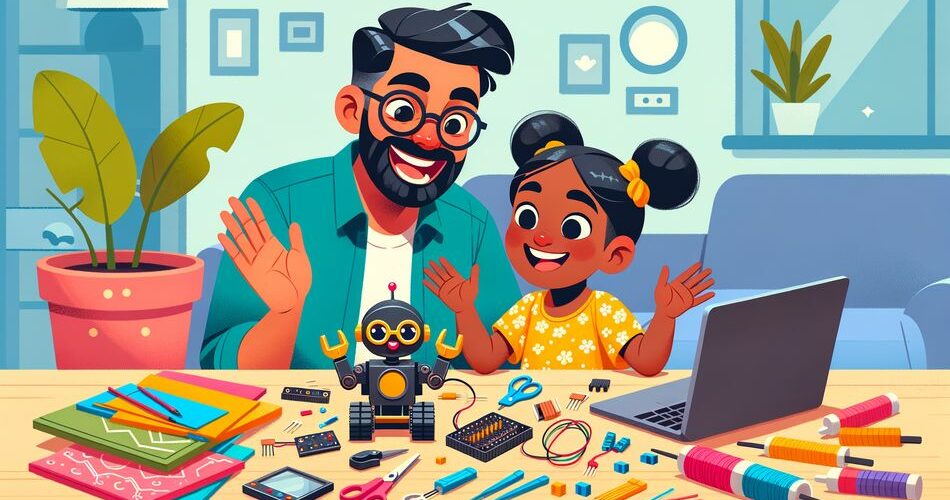Introduction
Welcome to Growing Together, your trusted resource for expert parenting tips and child development advice. In today’s digital age, it’s essential to find ways to bridge the gap between traditional play and modern technology. One inspiring approach is to transition from craft time to code time, making STEM DIY projects a family affair. By incorporating Science, Technology, Engineering, and Mathematics (STEM) into your family’s routine, you not only nurture your child’s curiosity and problem-solving skills but also strengthen family bonds through collaborative learning. Let’s explore how to seamlessly integrate STEM DIY projects into your family’s downtime.
Body
1. The Importance of STEM in Early Education
STEM education fosters critical thinking, creativity, and innovation. Early exposure to STEM subjects can ignite a lifelong passion for learning and equip children with the skills necessary for future success. As parents, incorporating these elements into your child’s playtime can significantly impact their development.
2. Bridging Craft and Code
Many families may already enjoy craft time, where creativity thrives through the use of paper, glue, and colors. Transitioning from craft to code bridges creativity with logical thinking. For example, consider a simple craft project like building a paper rocket. Once the rocket is built, you can take it a step further by introducing basic coding concepts through a child-friendly programming language like Scratch. This could involve coding an animation of a rocket launch on the computer, connecting the tangible craft to a digital experience.
3. Simple STEM DIY Project Ideas
- Paper Circuits: Introduce basic electronics by creating circuits with copper tape, LEDs, and batteries. Children can design greeting cards or simple art projects that light up.
- Homemade Weather Station: Build a simple weather station using household items to measure rainfall, temperature, and wind speed. Use this data for a family science project to track and predict the weather.
- Robot Building Kits: Many affordable kits are available that allow children to build simple robots. These kits often incorporate basic coding to control the robot’s movements, providing a hands-on way to learn programming.
- Plant Growth Tracker: Combine gardening with technology by creating a plant growth tracker. Use a microcontroller like an Arduino to monitor soil moisture and create a digital log of your plant’s growth.
4. Encouraging Family Collaboration
One of the greatest benefits of making STEM DIY projects a family affair is the opportunity for family collaboration. Each project becomes a chance to work together, share ideas, and celebrate successes. Encourage each family member to take on different roles, whether it’s gathering materials, brainstorming ideas, or executing the project. This collaborative effort enhances communication skills and fosters a sense of teamwork.
5. Resources for Getting Started
There are numerous resources available to help families get started with STEM DIY projects. Websites like Instructables, education platforms like Khan Academy, and various YouTube channels offer step-by-step guides and tutorials. Libraries and local community centers often host STEM workshops and offer kits for check-out, making it easier to dive into these activities without significant upfront costs.
Conclusion
Transitioning from craft time to code time not only enriches your child’s education but also provides meaningful opportunities for family bonding. By integrating STEM DIY projects into your family’s routine, you foster an environment of creativity, curiosity, and lifelong learning. Embrace the adventure of discovering new concepts together and watch as your child’s confidence and enthusiasm for STEM subjects flourish. Happy crafting and coding!

